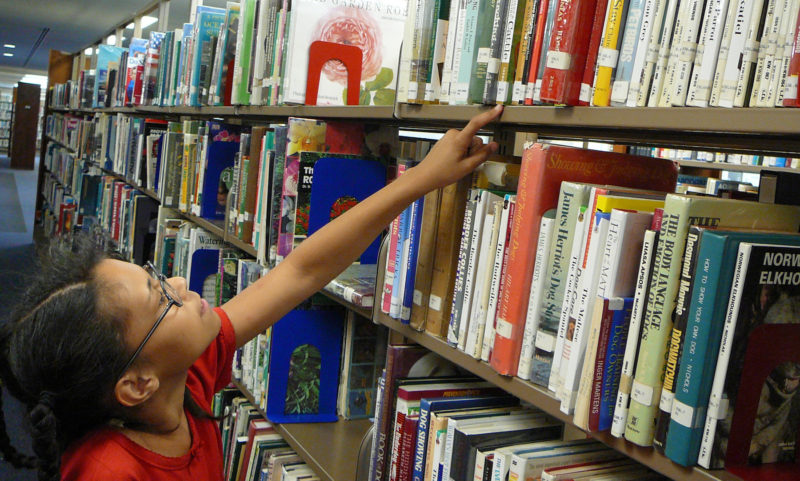 From young children at story hour to retirees learning second career job skills, the library “ecosystem” serves the needs of our community members throughout their lives. NEA Today spoke with John Chrastka, Executive Director of EveryLibrary -- the only national organization dedicated to building voter support for libraries by promoting public, school, and college libraries -- to talk the ecosystem about school and public library partnerships.
From young children at story hour to retirees learning second career job skills, the library “ecosystem” serves the needs of our community members throughout their lives. NEA Today spoke with John Chrastka, Executive Director of EveryLibrary -- the only national organization dedicated to building voter support for libraries by promoting public, school, and college libraries -- to talk the ecosystem about school and public library partnerships.
What is the library “ecosystem” and how do the parts work together?
John Chrastka: The ecosystem includes different ages and stages of people using public, school, and university and college libraries. It has no beginning or end. In Pre-K, public libraries play with parents and care givers as a place for stories and music and movement as well as play. The children’s librarian at a public library is one of the first educators for our children. As children enter elementary school, the school library along with the public library supports children learning to read and reading to learn. The wraparound of literacy support continues throughout the school year and break time. Students have access to a public librarian during breaks, after school, and over the summer slide. School and public libraries support class and have databases that extend the curriculum. They offer individualized learning, they help teach information literacy, and teach them how to be better students. Moving from high school, librarians on university and college campuses help students advance into a research and scholarship framework appropriate for higher education. They launch academic careers by helping with scholarship research, and continuing on from there, librarians can help you get your first business or first job. Then when you have kids, the cycle continues as you bring young children back to the library.
How has support for libraries changed in the digital age?
JC: Public library use continues to rise – in the building and in the digital collection. In the digital age circulation is measured in a different way with a “bricks and clicks” approach. We used to measure books being checked out and in. Now it's important to recognize that the curriculum support databases, e-books, and other digital access that only comes through a school or public library are essential learning "clicks" beyond the physical "bricks" of going into a library.
But that hasn’t always translated to financial support from government sources. The biggest threat we’ve seen is counter-intuitive. Some want to shrink government as a way to make people be more independent, but the library ecosystem is critical to helping our citizens access to resources they need to prosper. They not only serve the reading and research needs of our children, there are resources for people looking for work, for business loans and grants, for English language learners. The resources that libraries pay for and offer for free are essential to community development.
What are the best ways for public and school libraries to collaborate?
JC: There are different points of transitions. At the beginning, the public library prepares young children to enter the school system. Then the school librarian reintroduces the public library as a resource for breaks, weekends and summer. There are endless opportunities for integrated curriculum support between a school district’s libraries and the public libraries. It’s not just a hand-off from the last and first day of school, but a year-round collaboration.
Another critical collaboration is providing students with a school ID that also serves as their public library card. In many families, that could very well be their first and only library card. Now the entire family can check out books and use the library’s wealth of resources. It’s an amazing way to provide immediate access to families in a community who otherwise wouldn’t seek access. Everyone brings their kids to school, but not everyone goes to library.
If a school library doesn’t yet partner with local libraries, how can they start? What are the first steps?
JC: Offering pre-k readiness and a summer learning environment are easy ways to start. When a school librarian understands the curriculum, he or she can let the children’s librarian at the public library know what the schools would like to see in kids coming into kindergarten. Public libraries can offer story hours with songs and stories in different languages, for example.
Another way to partner is with what are often called “One book, One community” events, where everyone in the community and local school district reads the same book and then attend author visits and other library events to discuss and learn more about what they’ve read.
Why should teachers get more active in protecting our libraries?
JC: Having a school librarian means having a colleague who is focused on supporting the work being done in your classroom. It’s an invaluable peer resource and if you’re lacking that partnership it means carrying the water yourself. A qualified school librarian ensures better curricum planning and content delivery. They help get students more engaged in curriculum and they provide independent learning opportunities to meet individual student needs. It’s a unique role that pays enormous dividends.
Educators can advocate for librarians at NEA's My School My Voice, and at EveryLibrary.








